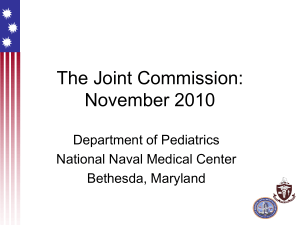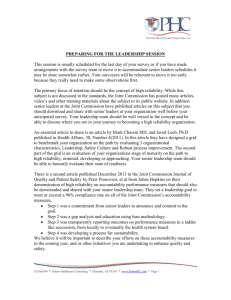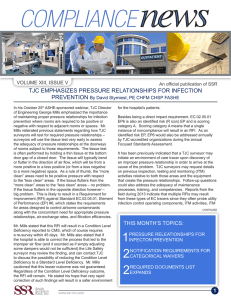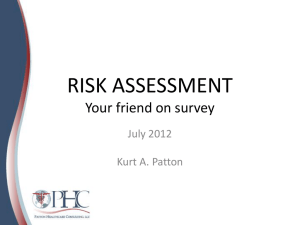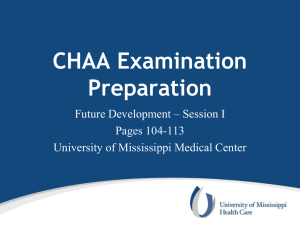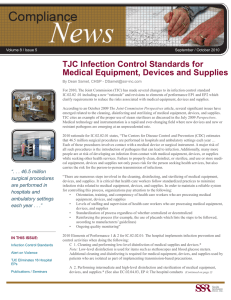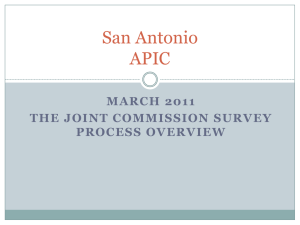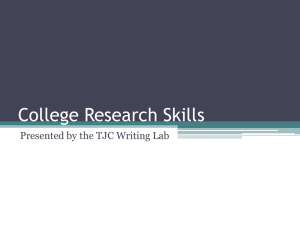CASE STUDY 1 ENGAGING THE TRACER METHODOLOGY AT
advertisement
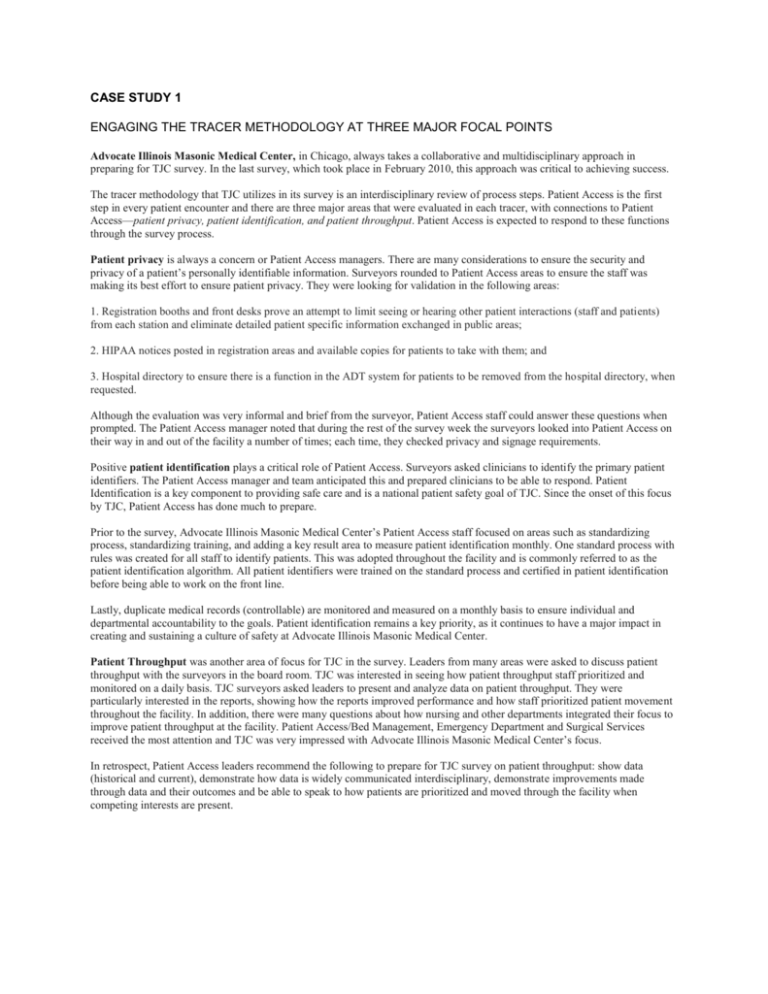
CASE STUDY 1 ENGAGING THE TRACER METHODOLOGY AT THREE MAJOR FOCAL POINTS Advocate Illinois Masonic Medical Center, in Chicago, always takes a collaborative and multidisciplinary approach in preparing for TJC survey. In the last survey, which took place in February 2010, this approach was critical to achieving success. The tracer methodology that TJC utilizes in its survey is an interdisciplinary review of process steps. Patient Access is the first step in every patient encounter and there are three major areas that were evaluated in each tracer, with connections to Patient Access—patient privacy, patient identification, and patient throughput. Patient Access is expected to respond to these functions through the survey process. Patient privacy is always a concern or Patient Access managers. There are many considerations to ensure the security and privacy of a patient’s personally identifiable information. Surveyors rounded to Patient Access areas to ensure the staff was making its best effort to ensure patient privacy. They were looking for validation in the following areas: 1. Registration booths and front desks prove an attempt to limit seeing or hearing other patient interactions (staff and patients) from each station and eliminate detailed patient specific information exchanged in public areas; 2. HIPAA notices posted in registration areas and available copies for patients to take with them; and 3. Hospital directory to ensure there is a function in the ADT system for patients to be removed from the hospital directory, when requested. Although the evaluation was very informal and brief from the surveyor, Patient Access staff could answer these questions when prompted. The Patient Access manager noted that during the rest of the survey week the surveyors looked into Patient Access on their way in and out of the facility a number of times; each time, they checked privacy and signage requirements. Positive patient identification plays a critical role of Patient Access. Surveyors asked clinicians to identify the primary patient identifiers. The Patient Access manager and team anticipated this and prepared clinicians to be able to respond. Patient Identification is a key component to providing safe care and is a national patient safety goal of TJC. Since the onset of this focus by TJC, Patient Access has done much to prepare. Prior to the survey, Advocate Illinois Masonic Medical Center’s Patient Access staff focused on areas such as standardizing process, standardizing training, and adding a key result area to measure patient identification monthly. One standard process with rules was created for all staff to identify patients. This was adopted throughout the facility and is commonly referred to as the patient identification algorithm. All patient identifiers were trained on the standard process and certified in patient identification before being able to work on the front line. Lastly, duplicate medical records (controllable) are monitored and measured on a monthly basis to ensure individual and departmental accountability to the goals. Patient identification remains a key priority, as it continues to have a major impact in creating and sustaining a culture of safety at Advocate Illinois Masonic Medical Center. Patient Throughput was another area of focus for TJC in the survey. Leaders from many areas were asked to discuss patient throughput with the surveyors in the board room. TJC was interested in seeing how patient throughput staff prioritized and monitored on a daily basis. TJC surveyors asked leaders to present and analyze data on patient throughput. They were particularly interested in the reports, showing how the reports improved performance and how staff prioritized patient movement throughout the facility. In addition, there were many questions about how nursing and other departments integrated their focus to improve patient throughput at the facility. Patient Access/Bed Management, Emergency Department and Surgical Services received the most attention and TJC was very impressed with Advocate Illinois Masonic Medical Center’s focus. In retrospect, Patient Access leaders recommend the following to prepare for TJC survey on patient throughput: show data (historical and current), demonstrate how data is widely communicated interdisciplinary, demonstrate improvements made through data and their outcomes and be able to speak to how patients are prioritized and moved through the facility when competing interests are present. CASE STUDY 2 CONSTANT AND ONGOING TRAINING: PATIENT SAFETY FRIDAYS New York Presbyterian Hospital has a unique and effective focus on preparing for TJC. These methods have promoted successful surveys. The principle behind their success is to prepare on a constant and ongoing basis. Their preparation starts at the conclusion of a survey. The main goal is to be ready at any time and in any area of the hospital; the entire hospital participates and has a role in achieving successful survey results. Every Friday morning at New York Presbyterian Hospital, with very few exceptions, is dedicated to patient safety and organization readiness programs called Patient Safety Fridays. The entire management team is required to round on an assigned unit and complete a survey. The manager acts as the surveyor and conduct interviews with the staff as if it were a real survey. There are set questions each week that the staff is asked. If coaching is needed on a particular topic, it is completed at that time. No staff person is safe. Members of the survey team may question any employee of the hospital and any member of the medical team including attending physicians, residents, and interns. If there is push back on answering the questions, senior management will speak with the person to explain the importance of the rounds to that individual. Topics include everything from patient identification to medication safety to fire safety. There generally is an hour lecture on the particular topics that the survey management team will be surveying that day and then for the next hour and half the management team is rounding. The focus of the rounds is not a “gotcha” but should be used as a teachable moment; that is how the staff regards these sessions now. Staff uses the survey team’s time on the units as an opportunity to ask questions regarding policies and procedures. In the Patient Access department, the staff is also “readied” as topics pertaining to them are surveyed. These include privacy policies, interpreter services, fire/safety and throughput initiatives. The survey results reflected New York Presbyterian Hospital’s preparation as it resulted in their best survey ever; the results even impressed the surveyors. The staff was prepared, ready, and engaged when the survey commenced and the surveyors took note. One of New York Presbyterian Hospital’s emergency department registrars was interviewed regarding patient privacy and what she should do when a patient comes in with a cough. The registrar correctly answered the surveyor. The registrar reported to the Patient Access manager afterwards that she was very nervous, but that the preparation allowed her to respond correctly.
